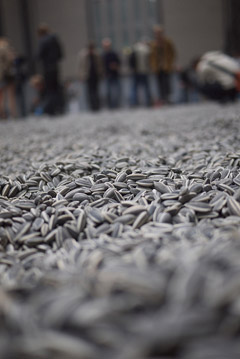Ai Weiwei
As one of China’s foremost contemporary artists, Ai Weiwei acted as artistic design consultant when working with Herzog and de Meuron the Swiss architecture firm that designed “The Bird’s Nest”, Beijing’s National Stadium. He also assisted in establishing a village for experimental artists in Beijing called “East Village”. Since his consultancy role he has distanced himself from the Chinese state and the Olympic Games refusing to attend the opening ceremony. He has become an outspoken advocate for Chinese political reform.
Born in 1957, Ai Weiwei is a renowned cultural figure who works and resides in Beijing. He is a sculptor, conceptual artist and curator. In 1978 he became involved with the Beijing Film Academy and joined the artist group “Stars” who refused clearly to produce Chinese art in accordance with government guidelines. The international attention to the first exhibition of this group which was completely unofficial was immense. The exhibition was shown by a fence of the National Gallery in Beijing.

In 2011, Ai was arrested on tax evasion charges. This caused a tidal wave of international protest. A few months after his arrest he was granted bail on strict conditions. During this same year, Ai was included in the list of Time magazine’s top 100 influential people in the world.
Early Life

Works
Ai infuses his photos, sculptures, and public artworks with personal poetry and political conviction making use of historic Chinese art forms critically examining contemporary Chinese political and social issues. His sculptural works often use reclaimed materials such as ancient wood and pottery from ruined temples a concept that connects modern social concerns with tradition.

His more famous art work includes Coca Cola Vase, Sunflower Seeds, Circle of Animals, Template and Remembering.
Music
In October 2012, Ai went live with a cover of Gangnam Style by famous K-pop rapper PSY. The four-minute parody video on YouTube attempted to criticise the Chinese government’s attempt to silence his activism and was quickly blocked by national authorities.
Ai Weiwei also debuted his first single Dumbass via the internet. The music video reconstructed Ai Weiwei’s prison experience diving in and out of reality. More singles followed debuting on You Tube.
This complex artist merges political activism with mainstream and avant-garde artwork including digital presentations, documentaries and music.
